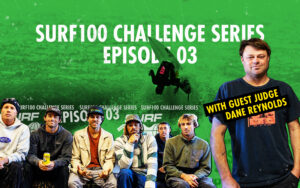Scientists (Re)Search For A Better Wetsuit
“There’s a history in our sport of fuzzy math and claims and marketing and not a lot of accountability, nobody’s really checking up on it.”
Surfers aren’t typically interested in science. We’re more interested in anecdotes, word of mouth, and often simple aesthetic. There’s no arguing that wetsuits have evolved from their restrictive origins, but there’s hardly been a legitimate revolution.
They’re stretchier, warmer and dry incredibly fast, but according to a recent study reported by Science Magazine, wetsuits and their manufacturers are blatantly ignorant of research. Anecdotal trial and error will give you improvements over time, but if you’re looking for rapid improvement, as boring as it might be, experimental research is the only method.
“Lots of the surf industry is really resistant to getting any kind of scientific data,” Sean Newcomer, a kinesiologist involved in the study said.
The study, being run by California State University (CSUSM) alongside Hurley, aims to take a scientific eye to wetsuit design and performance. Sean Newcomer, who’s run eight surf related studies in the previous three years is heading up the experiment, recruiting both exercise physiology students and surfers to participate.
From the wetsuits debated origins and invention (a must read here), we’re still working under the premise that you don’t need to keep dry to stay warm. Wetsuits are water permeable, allowing water to seep into the material, but provide an insulating layer protecting us from the cold brine and breeze.
Surfing in science does however have it’s downfalls. Wrangling a watch under your suit is hard enough, let alone eight small thermometers. Photo: Science/Jon Cohen
Newcomer argues that the only truly scientific research thats been conducted throughout the wetsuit’s history were those conducted by Navy SEALs in Hugh Bradner’s original neoprene suit. “The military did cold water immersion studies, and that’s where lots of data about how to build wetsuits comes from.” Newcomer says. “At no point in surfing are you intentionally sitting in water up to your neck.”
In 2017, Newcomer conducted a study specific to surfers and their movements. “Citing the few studies that do exist, they note that the time spent “surfing” consists mostly of paddling (44%–58%), followed by sitting on a board or lying stationary (28%–42%), diving under waves or swimming (2%–16%), and then riding waves (4%–8%)” reads the Science Mag article.
And while differences in movements are obvious to anyone who’s ever surfed, or even seen Blue Crush, the impacts these movements and positioning have on heat retention is less intuitive.
“There’s a history in our sport of fuzzy math and claims and marketing and not a lot of accountability,” Evan Slater, surfer and Hurley’s senior director told Science Mag. “Nobody’s really checking up on it.”
Jon Cohen (Science Mag) kitted out in the latest neoprenal prison. Photo: Science
Newcomer’s latest research, thanks to a flurry of skin thermometers, identifies the particular regions were heat lost occurs most rapidly; these regions being the calfs and thighs due to their near constant submersion, followed by the lower abdomen, back, and the forearms. The simplest understanding for why, is that water has a greater thermal conductivity than air, therefore the regions that are submerged for longer will lose heat the quickest – although we’re all aware at what a howling winter wind will do to combat this fact.
These regions of the body, as Newcomer highlights, don’t align with the regions most protected by the old 3:2 suit – three mils on the torso and two throughout the remainder. This isn’t a steadfast rule throughout all suit designs, but considering most wetsuits are produced from the same Asian factories, it’s easy to assume consistency.
In light of this research, Hurley, who’ve funded this recent study, are moving towards new materials in their 2019 range – although they won’t reveal any details. Hurley indicated they’re prepared to step away from the overused and unsustainable neoprene, using these studies to test new and improved materials that’ll both reduce impact and improve wetsuit performance.
Jeremy Sheppard, a Ph.D. graduate from CSUSM believes that future wetsuits may even “enhance your performance”, so maybe we’ll all be wearing our second skins into summer rather than opting for trunks the minute the mercury rises.
In defence of the wetsuit industry as a whole, there’s no denying the rapid improvement we’ve witnessed and the performance of today’s best suits; if we can surf semi-comfortably in the arctic circle and still retain our unrestricted surfing performance potential, then the wetsuit companies are doing something right. But as producers run out of fancy names, rebrands and colour-ways, it might be time we take a step back from the neoprene box in which we’re currently confined and search for a new secondary skin.













Comments
Comments are a Stab Premium feature. Gotta join to talk shop.
Already a member? Sign In
Want to join? Sign Up